The Cacao: A Sweet History IELTS Reading Answers
5 min read
Updated On
-
Copy link
Table of Contents

Limited-Time Offer : Access a FREE 10-Day IELTS Study Plan!
The Academic passage ‘The Cacao: A Sweet History’ is a reading passage that appeared in an IELTS Test.
Ideally, you should not spend more than 20 minutes on a passage. Let’s see how easy this passage is for you and if you’re able to make it in 20 minutes. If not, try more IELTS reading practice test from IELTSMaterial.com
The Cacao: A Sweet History
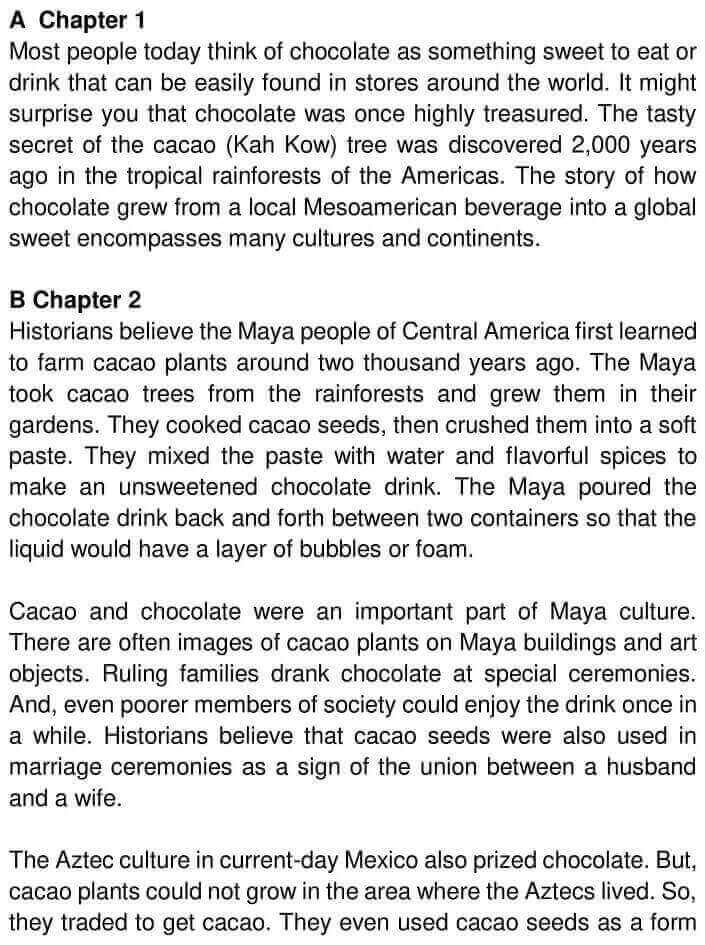
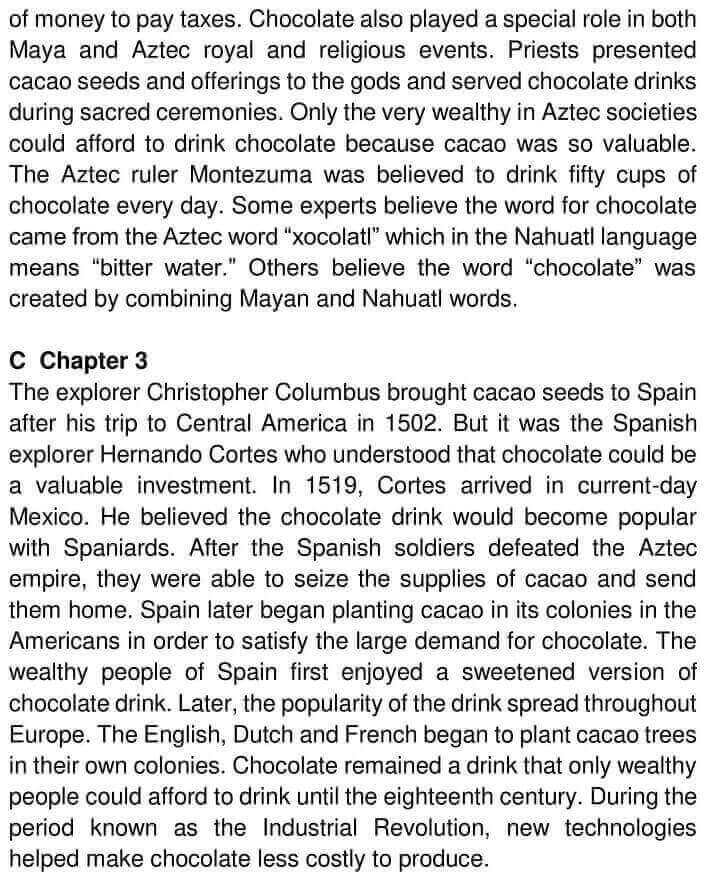
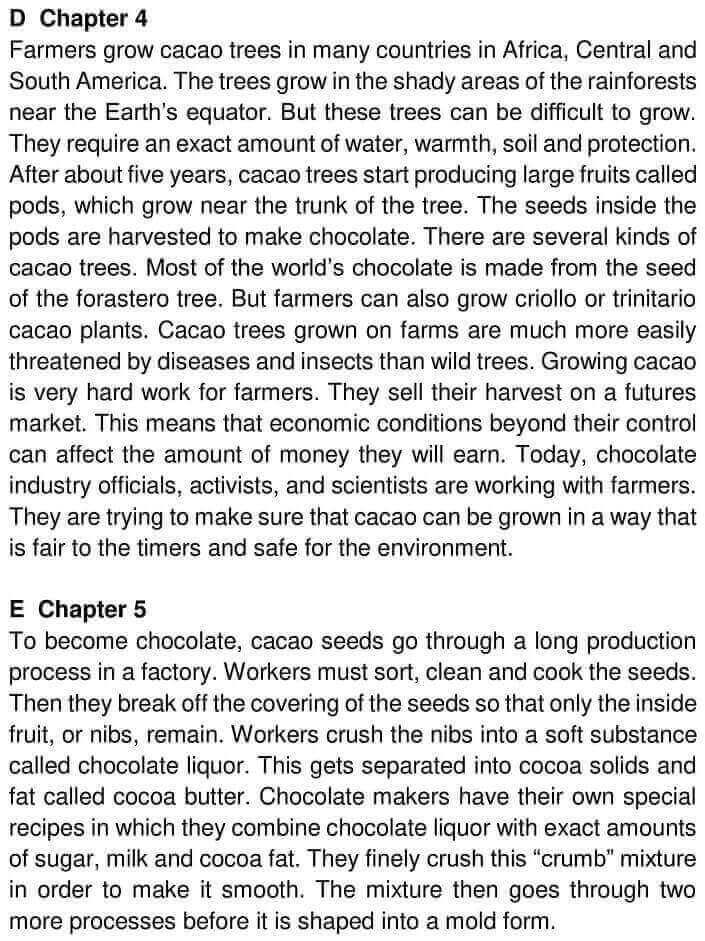
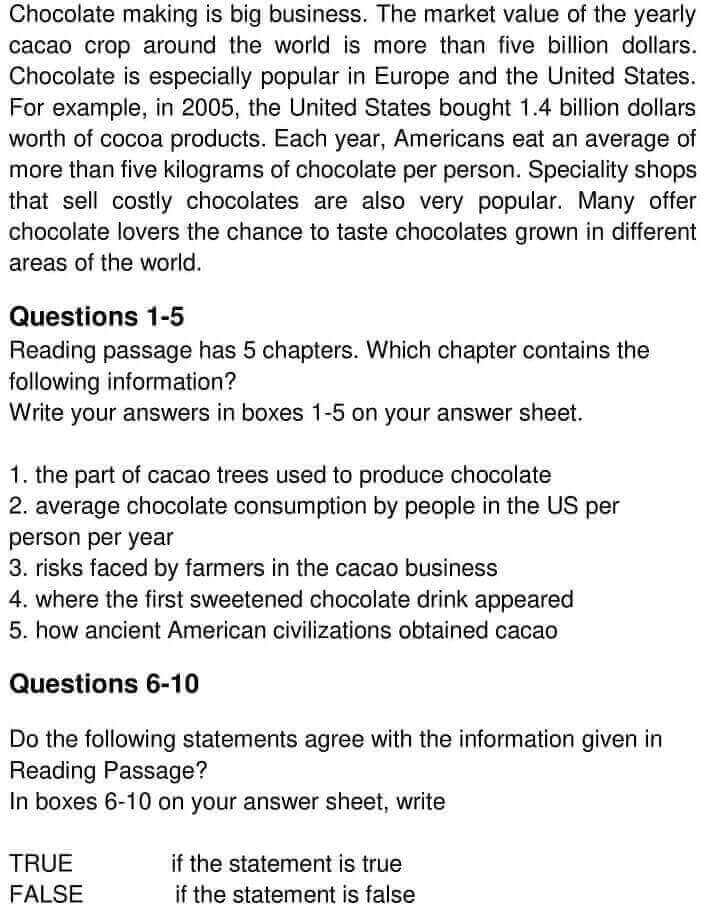

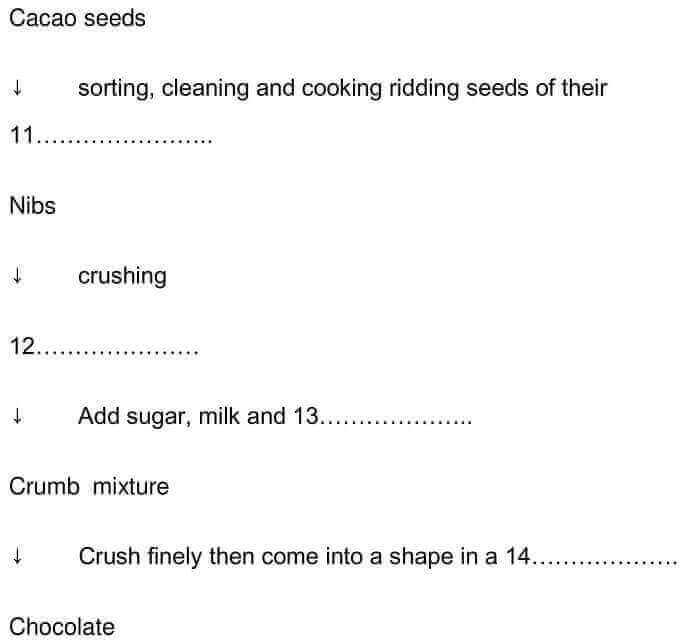
Answers
Unlock Answers
| Question number | Answer | Explanation |
|---|---|---|
| 1 | D | According to Paragraph D, “after about five years, cacao trees start producing large fruits called pods, which grow near the trunk of the tree. The seeds inside the pods are harvested to make chocolate.” This means the ‘seeds’ are the part of trees used to produce chocolate. Hence, the correct answer is “D.” |
| 2 | E | As per Paragraph E, “each year, Americans eat an average of more than five kilograms of chocolate per year.” Therefore, the average consumption of chocolate is 5 kilograms in the US per person per year. Hence, the correct answer is “E.” |
| 3 | D | In Paragraph D, the author mentions that “growing cacao is very hard work for farmers. They sell their harvest on a futures market. This means that economic conditions beyond their control can affect the amount of money they will earn.” Through this line, we can infer that the risk faced by farmers in the cacao business is that ‘they sell their harvest on a futures market.’ Hence, the correct answer is “D.” |
| 4 | C | Paragraph C states that “wealthy people of Spain first enjoyed a sweetened version of chocolate drink.” From this information, we can deduce that since people of Spain first enjoyed the sweetened version of chocolate drink, that means it first appeared in Spain. Hence, the correct answer is “C.” |
| 5 | B | In the first few lines of Paragraph B, the author states that “historians believe the Maya people of Central American first learned to farm cacao plants around two thousand years ago. The Maya took cacao trees from the rainforests and grew them in their gardens.” Since Maya people were from Central America, and the aforementioned lines mention that ‘Maya took cacao trees from the rainforests. Therefore, we can deduce that the ancient American civilization Maya obtained cacao from rainforests. Hence, the correct answer is “B.” |
| 6 | FALSE | In Paragraph B, there’s a line that mentions that “even the poorer members of the society could enjoy the drink once in a while.” As less privileged members of the society could enjoy the drink once in a while, that means it’s not true that using cacao and chocolates were restricted to Maya royal families. As the statement contradicts the information, the correct answer is “FALSE.” |
| 7 | NOT GIVEN | Paragraph C states that “it was the Spanish explorer Hernando Cortes who understood that chocolate could be a valuable investment.” Also, the first line of this paragraph mentions that explorer Christopher Columbus brought cacao seeds to Spain. But there is nothing explicitly mentioned in the passage which confirms who invested in chocolate and chocolate drinks. Hence, the correct answer is “NOT GIVEN.” |
| 8 | NOT GIVEN | There’s a line in paragraph D that claims that “most of the world’s chocolate is made from the seed of the forastero tree”, whereas it’s not mentioned that it produces the best chocolates. Hence, the correct answer is “NOT GIVEN.” |
| 9 | TRUE | The third line in paragraph E mentions that “they break off the covering off the seeds so that only the inside fruit or nibs remain” From this, we can deduce that coverings of the seeds are got rid of during the chocolate process. As the statement agrees with the information, the correct answer is “TRUE.” |
| 10 | TRUE | Paragraph E conveys that “chocolate is especially popular in Europe and the United States.” Since chocolate is more popular in Europe and the United States, it is true that it is more welcomed in these countries than in other parts of the world. As the statement agrees with the information, the correct answer is “TRUE.” |
| 11 | Covering | Paragraph E also conveys that “they break off the covering of the seeds so that only the inside fruit or nibs remain.” It means the process of sorting, cleaning, and cooking involves getting rid of the covering of the seeds. Hence, the correct answer is “covering.” |
| 12 | Chocolate liquor | Paragraph E also conveys that “workers crush the nibs into a soft substance called chocolate liquor.” This line confirms what workers obtain after crushing is chocolate liquor. Hence, the correct answer is “chocolate liquor.” |
| 13 | Cocoa fat | In Paragraph E, the writer states that “chocolate makers have their own special recipes in which they combine chocolate liquor with extra amounts of sugar, milk and cocoa fat. They finely crush this ‘crumb’ mixture in order to make it smooth.” From the phrase ‘extra amounts of sugar, milk and cocoa fat’, we can deduce that the remaining substance is cocoa fat. Hence, the correct answer is “cocoa fat.” |
| 14 | Mold (form) | As per Paragraph E, “the mixture then goes through two more processes before it is shaped into a mold form.” This information implies that the crumb mixture crush finally comes to a shape when processed into a mold form. Hence, the correct answer is “mold form.” |
Check More IELTS Reading Answers
Also check :
Practice IELTS Reading based on question types

Start Preparing for IELTS: Get Your 10-Day Study Plan Today!
Recent Articles

Nehasri Ravishenbagam

Haniya Yashfeen

Haniya Yashfeen

Haniya Yashfeen
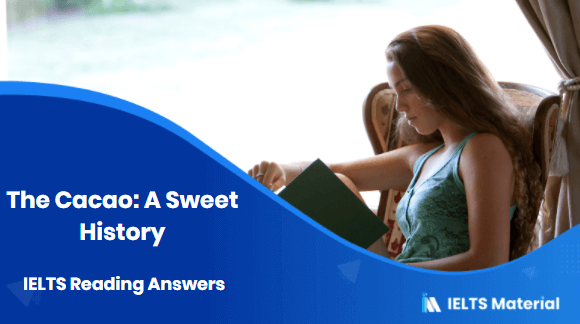



Post your Comments